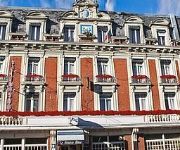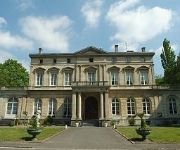Facts and Data
Webpages:
Official Unesco Page
Association Beffrois du Patrimoine mondial (in French)
Flanders Heritage Agency (in Dutch)
Basis Data:
Unesco World heritage since: 1999
Size of heritage:
Coordinates:
Longitude: 3,231°
Latitude: 50,174°
Summary
Twenty-three belfries in the north of France and the belfry of Gembloux in Belgium were inscribed as a group, an extension to the 32 Belgian belfries inscribed in 1999 as Belfries of Flanders and Wallonia. Built between the 11th and 17th centuries, they showcase the Roman, Gothic, Renaissance and Baroque styles of architecture. They are highly significant tokens of the winning of civil liberties. While Italian, German and English towns mainly opted to build town halls, in part of north-western Europe, greater emphasis was placed on building belfries. Compared with the keep (symbol of the seigneurs) and the bell-tower (symbol of the Church), the belfry, the third tower in the urban landscape, symbolizes the power of the aldermen. Over the centuries, they came to represent the influence and wealth of the towns.
Location on Map
Show bigger map on Openstreetmap
The Belfries of Belgium and France: A Testament to Medieval Architecture
The Belfries of Belgium and France, a UNESCO World Heritage site, are a collection of 56 belfries located in both countries. These iconic structures, scattered across the landscape, serve as a testament to the rich medieval history and architectural prowess of the region.
Historical Significance
The belfries, which date back to the 11th century, were originally constructed as watchtowers to protect the cities from potential threats. Over time, they evolved into symbols of civic pride and prosperity. The belfries also served as a means of communication, with their bells ringing out to announce important events, such as fires, enemy attacks, or the opening of markets.
During the Middle Ages, the construction of belfries became a competition among cities, each vying to build the tallest and most impressive tower. This led to the development of unique architectural styles, blending elements of Romanesque, Gothic, and Renaissance design. The belfries were often built adjacent to town halls or cathedrals, further enhancing their significance as symbols of civic power.
Current State
Today, the belfries of Belgium and France continue to captivate visitors with their grandeur and historical significance. Many of these structures have been meticulously preserved and restored, allowing visitors to experience the architectural splendor of the past.
One notable example is the Belfry of Bruges, located in the historic city center of Bruges, Belgium. Standing at 83 meters tall, this medieval tower offers breathtaking panoramic views of the city. Visitors can also explore the Belfry's interior, which houses a fascinating collection of historical artifacts and documents.
Another remarkable belfry is the Belfry of Arras, situated in the city of Arras, France. This UNESCO-listed tower, standing at 75 meters, is renowned for its intricate Gothic architecture. Visitors can climb the 332 steps to reach the top, where they are rewarded with stunning views of the city and its surroundings.
While some belfries have been converted into museums or tourist attractions, others continue to serve their original purpose. The Belfry of Ghent, for instance, still functions as a watchtower and houses a carillon of 54 bells that chime melodiously throughout the day.
The belfries of Belgium and France are not only architectural marvels but also bear witness to the region's rich cultural heritage. They provide a glimpse into the medieval past, reminding us of the importance of these structures in the social, economic, and political life of the cities they represent.
Visiting these belfries is a truly immersive experience, allowing visitors to step back in time and appreciate the craftsmanship and ingenuity of our ancestors. Whether exploring the winding staircases, admiring the intricate stonework, or listening to the resonant chimes of the bells, the belfries of Belgium and France offer a unique and unforgettable journey into the past.
Hotels and places to stay
Mouton Blanc Logis
Château de la Motte-Fenelon
Comfort Hotel Cambrai
Zenia Hotel & Spa
Kyriad Cambrai
ibis Cambrai
Inter Hotel Cambrai INTER-HOTEL
Première Classe CAMBRAI - Proville Proville
Videos from the area
Videos provided by Youtube are under the copyright of their owners.















